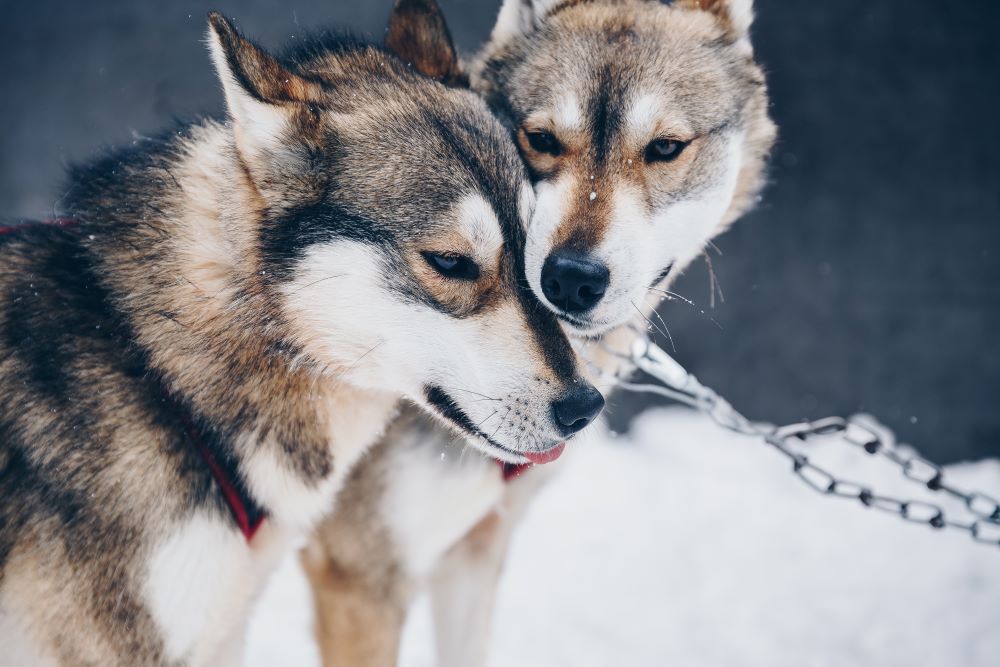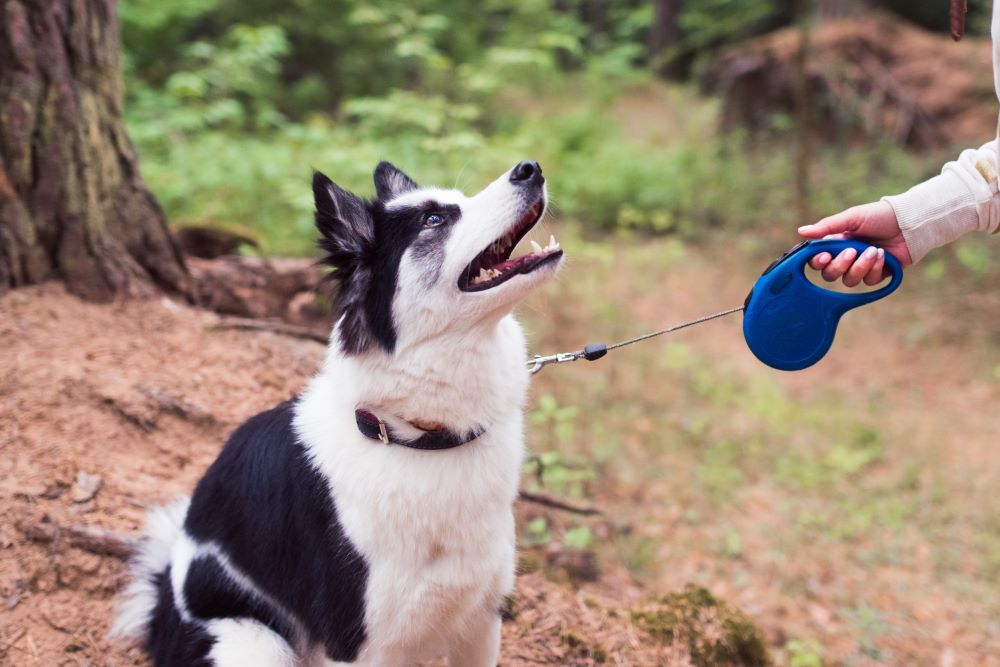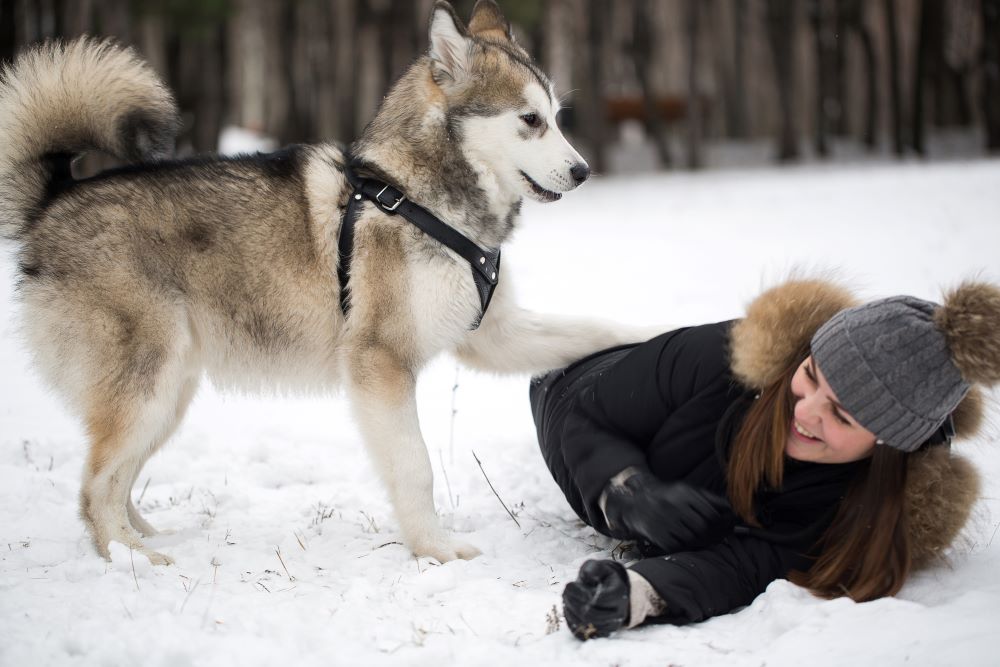Get Pet Insurance for your Cat & Dog

Zero
Documentation
Quick
Claim Process
Affordable
Premium
Terms and conditions apply*
- {{species}}
- {{indoorOutdoor}}
- {{suminsured}}
Siberian Husky Dog Breed Characteristics & Information

Siberian Huskies, with their thick double coats and wolf-like look, symbolise a rare combination of grace and power. These dogs have roots in Siberia, where the Chukchi people selected them for hardiness and friendliness.
Keep reading to learn more about Siberian husky dogs, their intriguing characteristics, and the care they require.
What Are the Characteristics of Siberian Husky Dogs?
- Lifespan: Siberian Huskies have an average lifespan of 12 to 15 years.
- Height: Siberian Huskies are medium-sized canines standing at the shoulder 20 to 23.5 inches (51 to 60 cm) tall.
- Colour: Siberian Huskies can have a variety of coat colours, including black, grey, red, and agouti, as well as different face markings. The breed is distinguished by its remarkable blue eyes. However, they can also have brown, green, or amber eyes.
- Weight: A Siberian Husky weighs between 35 and 60 pounds (16 and 27 kg).
- Behaviour: Siberian Huskies are praised for being gregarious and friendly around people and other dogs. They can, however, be autonomous and have a strong prey drive, so careful training and monitoring are essential.
- Living Conditions: Their thick double coat protects Siberian Huskies from the cold. They cannot make do in urban settings, but they shine in chilly climates. Their health depends on regular exercise, and homes with fenced yards where they may run and play are ideal.
How to Train Siberian Husky Dogs?

The following points show how to train your Siberian Husky dogs.
- Manage Aggression: Establish dominance to address hostile conduct immediately. Failure to control aggression may result in more aggressive behaviour against people and other canines.
- Use Positive Reinforcement: Positive reinforcement is used to establish excellent manners. Tasty goodies and an encouraging voice reinforce positive acts. Provide prizes as soon as possible to promote certain behaviours.
- Use Discipline and Command Training: Use discipline without resorting to violence. Use aggressive language such as "no" or "stop" without becoming angry or punishing them. To redirect behaviour, use control resources like food and toys.
- Establish a Routine: Establish a daily program for training, play, toilet breaks, and exercise. Routines assist the owner and the dog by optimising time spent together and decreasing stress.
- Training with Children and Newborns: Teach your husky and children to respect one another. Teach children about boundaries and ensure they follow them under adult supervision. Also, begin obedience training well before the birth of a newborn. To replicate circumstances and scents, practice commands with a baby doll.
- Practice Crate Training: It can be pretty problematic to leave your Siberian Husky unattended. Therefore, you must train them to be comfortable inside a crate. Also, the crate must be large enough to accommodate the dog conveniently.
What Are the Common Health Problems in Siberian Husky Dogs?
|
Health Problem |
Description |
Management/Treatment |
|
Cataracts |
A common genetic eye disease in Siberian Huskies. |
Cataract surgery and regular veterinary screening for early detection are possible. |
|
Progressive Retinal Atrophy |
Affects the retinas and is thought to be inherited. Males are more prone to it. Keep an eye out for symptoms like blurred vision at night. |
A care plan can be developed with the help of a veterinarian. |
|
Corneal Dystrophy |
Whitening or white patches in the cornea could indicate development. |
There is no cure or effective treatment. |
|
Glaucoma |
Shows up as watery eyes, redness, or blue corneas. |
Seek veterinary evaluation and therapy for the best results. |
|
Pannus |
Corneal inflammation can darken as a result of sun exposure. |
Consult the vet for proper treatment to manage Pannus. |
|
Hypothyroidism |
Affects the thyroid glands, influencing metabolism. |
Discuss management options with your veterinarian. |
|
Hip Dysplasia |
Common in Siberian Huskies, improperly formed hips cause this condition. |
A veterinarian's advice is sought for treatment alternatives, including surgery. |
|
Zinc Deficiency |
Red, peeling, bald, and oozy skin are symptoms. |
Consult your veterinarian about zinc supplements. |
|
Uveodermatologic Syndrome |
Eye and skin pigmentation and the neurological system are all affected. |
Long-term immune-boosting medicine administered by a veterinarian. |
|
Follicular Dysplasia |
Symptoms include hair loss, irregular growth, and uneven skin. |
Consultation with a veterinarian regarding specific shampoos or topical treatments. |
|
Pemphigus Foliaceus |
The immune system targets skin cells, causing crusting and hair loss. |
A veterinarian prescribes medication to control the condition. |
|
Hot Spots |
Excessive licking might cause hot patches on the skin. |
Seek veterinary assistance for appropriate medication to treat hot areas. |
How to Care for Siberian Husky Dogs?

Follow these pointers to take care of your Siberian Husky conveniently.
- Exercising: Siberian Huskies are high-energy canines that need to run three to five miles daily. Avoid overexertion by working up to a higher intensity of activity gradually.
- Grooming a Husky: To keep the coat in good condition and to minimise shedding, brush your Husky regularly. A Furminator comb might be helpful in efficiently removing undercoat loose fur. Avoid taking baths unless necessary; doing so might remove the skin's natural protective oil if done too frequently. Your husky will be more comfortable if you don't cut its fur.
- Feeding habits for a Husky: Feed a mixture of high-quality commercial dog food and raw meat, both good protein sources. Get your pet's diet checked out by a vet.
Thus, Siberian Huskies are great companions because they exhibit an ideal combination of attractiveness, intelligence, and physical prowess. These wolf-like dogs hail from Siberia and are highly devoted to their experienced owners.
















